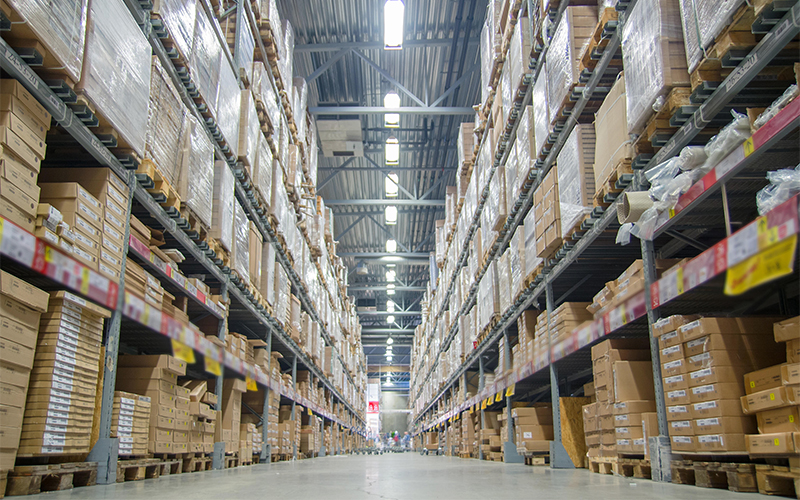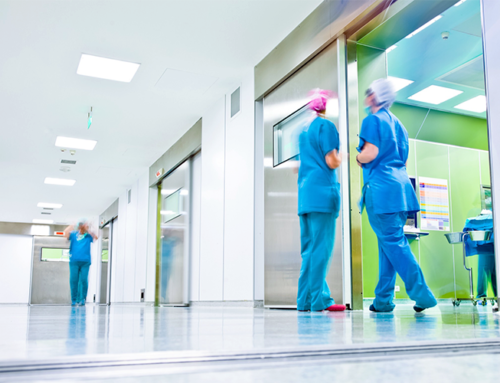
Updated lighting systems provide a ton of benefits for the building owner, the building’s occupants, and the electric utility. In fact, according to the U.S. Small Business Administration, when looking for easy energy efficiency improvements, replacing or retrofitting non-energy efficient light fixtures is one of the quickest and easiest solutions. Improvements are further multiplied once lighting controls, such as occupancy sensors, are factored in.
The main benefits of energy efficient lighting include reduced electricity demand, dramatic energy and maintenance savings, and a lower operating costs. There are also less quantifiable benefits, such as improved lighting quality, better light distribution, productivity boosts, and a lower carbon footprint, which may be even more important to your business.
Five Reasons To Consider A Facility Lighting Upgrade
- Energy Savings: The most obvious and immediate benefit to retrofitting an outdated lighting system is to reduce lighting costs and related expenses. By upgrading lighting components to more efficient and advanced technologies, LED lighting retrofits can cut down on energy consumption, and lower energy bills, while maintaining light levels and quality. Upgraded lighting tech can also offer employees greater control over the lighting of their workspace, which may provide additional energy savings, and increase employee satisfaction.
- Improved Lighting Quality: Lighting retrofits can improve lighting quality by targeting areas with pre-existing problems and using specific design considerations to overcome common lighting issues. Using newer technologies can potentially add increased reliability to your lighting system, causing fewer short-term lighting-quality issues. In addition to added reliability, newer tech often provides better lighting characteristics, such as greater light output, improved color, reduced flicker, less glare, etc.
- Reduced Maintenance and Labor: Most energy-efficient lighting retrofits also curtail maintenance costs. Improvements in lighting technology has led to the increased lifetimes of lighting components, which result in fewer failures, and lengthens the time between required maintenance. Moreover, lighting retrofit programs typically involve significant equipment replacements—often, many lighting systems are being replaced after 10 years or more of neglect—and offer an opportunity to begin new maintenance procedures which can also help to reduce maintenance costs in the long term, while providing a sense of renewal in the building’s appearance, and sense of brightness.
- Cleaner Air: A considerable amount of electricity is produced in generation plants via the combustion process, adding literal tons of pollutants to the atmosphere, which contribute to global warming, acid rain, and other environmental problems. By consuming less electricity, facilities can help reduce the demand and harmful emissions, such as CO2 and SO2, associated with “off-site” power generation.
- Improved Productivity: Modern day workers spend more time on the job than their predecessors; if they’re not working productively, they aren’t benefiting their employer. It can be difficult to document and assign a monetary value to the relationship between an energy-efficient lighting system and worker productivity; however, there is little doubt that workers would be more productive if the glare was removed from computer screens, the electric light provided better color rending, or if flicker were eliminated.
Try Our Free Energy Savings Calculator!
Significance of Lighting Retrofits
Investing in a lighting retrofit makes good economic sense for just about any commercial building, as an increasing number of businesses are under constant pressure to improve productivity and lower operating costs. By replacing aged lighting components with advanced energy-efficient components, a building’s lighting energy costs can be reduced by as much as 60%, while maintaining, or even enhancing the quality of the visual environment.
In fact, according to the Electric Power Research Institute (EPRI)’s Lighting Retrofit Manual, “Most lighting retrofits pay for themselves through energy savings in less than seven years; in some cases, simple payback can occur in under three years.”
Lighting represents approximately 40% of electricity consumption in the commercial sector, but highly-efficient lighting retrofits can cost-effectively save anywhere from 30-60% of this energy. When worker productivity and satisfaction are factored into the economic analysis, lighting improvements are shown to produce immediate benefits.
When a Lighting Upgrade Makes Sense
Upgrading the lighting system for your building makes sense any time lighting energy can be saved cost-effectively. One (or more) of the following conditions typically results in LED lighting retrofits:
- Excessive Illuminance: A majority of spaces in the building are overlit. Buildings that are over—or under—lit are consistent candidates for LED lighting retrofits. Most buildings constructed before the 1980s are likely to have excessive illuminance.
- Inefficient Technology: Over the past two decades, lighting technology and equipment has remarkably improved in terms of efficiency, product life, and lighting quality. However, older inefficient equipment is still commonly used, and its replacement is a primary strategy behind lighting retrofits.
- Poor Maintenance: Dust and dirt accumulates on lamps or fixtures with poor or infrequent maintenance, which can interfere with light delivery and reduce efficiency. Poor maintenance can also result in the use of lamps that are beyond their rated lives. According to the IES, “old lamps use the same power as new ones but produce significantly less light.”
- Long Hours of Operation: When a lighting system is operated almost continuously, any small improvement in lighting efficiency can save a considerable amount of energy. The long hours of lighting operation typical of hospitals, police stations, correctional facilities, etc. make most upgraded lighting systems easy to justify.
- High Electricity/Demand Charges: It can be easy to justify an investment in efficient lighting when energy rates are high. While the cost of installing an energy efficient lighting system remains constant, the energy cost savings over time are much greater, making lighting retrofits that would otherwise be marginal, much more-likely to be cost-effective.
- Sub-Optimal Lighting Conditions (Deferred Capital Re-Investment): Although not on the topic of energy savings via lighting, it’s also important to focus on the connection between retrofits, a high-quality visual environment, and the increased well-being and productivity of the occupants. As a building’s lighting systems are renovated, lighting energy use may stay constant or even fall, as the use of efficient lighting technologies increases. Incentives or other benefits of a new lighting system may minimize deferred capital gains.
Smart Lighting—The Next Big Thing?
The most forward-thinking businesses around the planet are already optimizing their operations and cutting costs through lighting upgrade technologies.
You’ve likely already heard of the IoT (Internet of Things) movement—a system of interrelated computer devices, machines, objects, animals, or people that have the ability to transfer data over a network without requiring human-to-human or human-to-computer interaction—but beyond the consumer IoT is the Industrial Internet of Things (IIoT). According to Navigant Research, the global market revenue for IIoT lighting is expected to swell to $4.5 billion in 2026, thanks to the widespread implementation of intelligent lighting products in industrial and commercial facilities around the globe.
With lighting upgrades, and now the ‘Smart Building’ movement, poised for exponential growth in the next few years, when will you consider getting your building’s lighting upgraded?
Conclusion
Energy Performance Lighting stays educated on lighting, because lighting is all we do. Our technicians stay up-to-date and informed on the latest energy efficient technology and smart lighting products on the market. The family at EPL is always happy to work with you and help you with any questions you may have. If you’re looking for a way to improve your facility environment, reduce your energy consumption, and boost worker productivity, a lighting upgrade may be the solution.
For more information, contact the Certified Lighting Efficiency Pros at Energy Performance Lighting. Giving us a call at (608) 661-5555 or schedule a free facility lighting evaluation in the box below.



